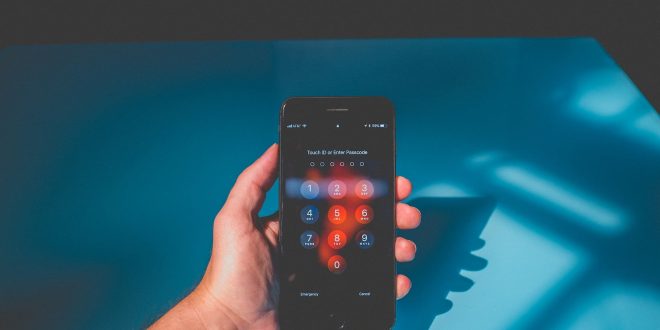Introduction
Our smartphones are our lifelines. We use them for everything—from banking to personal messaging—so keeping them safe is a top priority. But with malware threats growing every day, ensuring your smartphone’s security has never been more critical. Malware, or malicious software, can compromise your personal data, drain your bank account, or even render your device useless. So, how can you protect your smartphone from these threats? The key lies in using trusted apps designed to safeguard your device from malware.
Understanding Malware on Smartphones
What is Malware?
Malware, short for malicious software, refers to a range of harmful programs that are created to infiltrate, damage, or control a device. Smartphones, like computers, are vulnerable to different types of malware designed to steal personal information, monitor user activity, or disable device functionality.
How Malware Targets Smartphones
Malware can target smartphones in several ways, including through fake apps, malicious downloads, and unsecured networks. Cybercriminals often exploit the open nature of mobile platforms, particularly Android, to distribute malware to unsuspecting users.
The Impact of Malware on Smartphones
Personal Data Theft
One of the primary goals of malware is to steal sensitive personal information. This could include your contacts, photos, messages, and even banking information.
Device Performance Issues
Once infected with malware, your smartphone may experience a significant slowdown in performance. This is because the malware operates in the background, consuming system resources.
Financial Losses
Some types of malware are designed to make unauthorized purchases or steal funds directly from your mobile banking apps. This can lead to significant financial losses if left unchecked.
Common Types of Smartphone Malware
Viruses
Smartphone viruses work much like their PC counterparts, spreading through infected apps or downloads and replicating themselves on your device.
Spyware
Spyware is designed to monitor your activity and steal your personal data without your knowledge.
Ransomware
Ransomware locks you out of your phone until you pay a ransom. It’s an especially dangerous form of malware that’s been on the rise in recent years.
Trojans
Trojans disguise themselves as legitimate apps, tricking users into downloading them and granting them permissions. Once installed, they can wreak havoc on your device.
How Malware Infects Smartphones
Suspicious Apps and Downloads
One of the most common ways malware infects smartphones is through fake or suspicious apps. These apps often pose as legitimate but contain hidden malicious code.
Phishing Attacks
Phishing attacks can come in the form of fake emails, texts, or even social media messages that trick you into clicking on malicious links.
Public Wi-Fi Threats
Unsecured public Wi-Fi networks are breeding grounds for malware. Cybercriminals can easily exploit these networks to gain access to your device.
The Role of Trusted Apps in Malware Protection
Importance of Using Trusted Apps
Trusted security apps are your first line of defense against malware. They provide layers of protection by scanning apps, files, and networks for threats.
How Trusted Apps Provide Security
These apps are designed to detect malware before it can infect your device. They also offer tools to remove any threats that have already taken root.
Features to Look for in a Trusted Security App
Real-Time Protection
A good security app should provide real-time protection against emerging threats, blocking malware as soon as it’s detected.
App Scanning and Removal
It’s crucial that the app can scan for and remove malicious apps and files efficiently.
VPN and Secure Browsing
Some security apps come with built-in VPNs, which encrypt your internet connection and help prevent online tracking.
Privacy Features
Look for features that help protect your privacy, like blocking tracking cookies or limiting app permissions.
Top Trusted Apps for Smartphone Security
Avast Mobile Security
A reliable and popular choice, Avast offers free and premium versions that provide excellent malware protection and privacy features.
Bitdefender Mobile Security
Known for its lightweight design and powerful protection, Bitdefender offers robust malware detection, VPN, and anti-theft features.
Norton Mobile Security
Norton is a trusted name in cybersecurity, and its mobile version offers comprehensive protection, including phishing prevention and malware detection.
How to Install and Use Security Apps Safely
Verifying App Authenticity
Always verify the authenticity of the app before installing it. Ensure it’s downloaded from trusted sources like Google Play or the Apple App Store.
Setting Up the App for Maximum Protection
Make sure to configure the app’s settings to provide maximum protection, enabling features like real-time scanning and regular updates.
Additional Steps to Keep Your Smartphone Safe
Regular Software Updates
Keep your phone’s operating system and apps updated to ensure any security vulnerabilities are patched.
Using Strong Passwords and Biometrics
Use strong, unique passwords and enable biometric security (like fingerprint or facial recognition) to add an extra layer of protection.
Backing Up Your Data
Regularly backing up your data ensures that you won’t lose important information in case your device is compromised.
Avoiding Malicious Apps
How to Spot Suspicious Apps
Look for red flags like low ratings, few downloads, or permissions that seem excessive for the app’s purpose.
Only Download from Trusted Sources
Always download apps from trusted sources like Google Play or the Apple App Store, which vet apps for malicious activity.
Safe Browsing Practices
Avoiding Untrusted Websites
Steer clear of websites that seem suspicious or lack HTTPS encryption, as these could be breeding grounds for malware.
Using Encrypted Connections (HTTPS)
Whenever possible, use websites with HTTPS encryption to protect your data from being intercepted.
The Importance of App Permissions
Managing App Permissions Smartly
Be cautious when granting apps permissions—some apps request access to data they don’t need.
Understanding What Permissions Apps Really Need
Know which permissions are truly necessary for the app to function and avoid granting anything extra.
What to Do If Your Smartphone is Infected
Signs Your Phone is Infected
If your phone starts acting sluggish, displaying pop-ups, or draining the battery quickly, it might be infected with malware.
Steps to Remove Malware from Your Device
Use a trusted security app to scan and remove any malicious files. If that doesn’t work, you may need to perform a factory reset.
Conclusion
In today’s digital age, your smartphone is constantly exposed to potential malware threats. But by using trusted security apps, keeping your software updated, and practicing safe browsing, you can protect your device and personal data from harm. Always stay vigilant, because a little caution can go a long way in keeping your smartphone safe.
FAQs
- How can I tell if an app is trustworthy?
Check reviews, ratings, and permissions. Stick to apps from trusted sources like Google Play and the Apple App Store. - Is it safe to use free antivirus apps?
Many free apps are safe, but they may offer limited features. Paid versions often provide better protection. - What should I do if I accidentally download malware?
Immediately uninstall the app and run a malware scan using a trusted security app. - How often should I update my security app?
Regularly! Frequent updates ensure you’re protected against the latest threats. - Can malware infect my smartphone through Bluetooth?
Yes, it’s possible, but it’s rare. Always disable Bluetooth when not in use to avoid potential attacks.
 Carakus.com Wawasan Mendalam tentang Transformasi Digital dan Otomatisasi
Carakus.com Wawasan Mendalam tentang Transformasi Digital dan Otomatisasi






